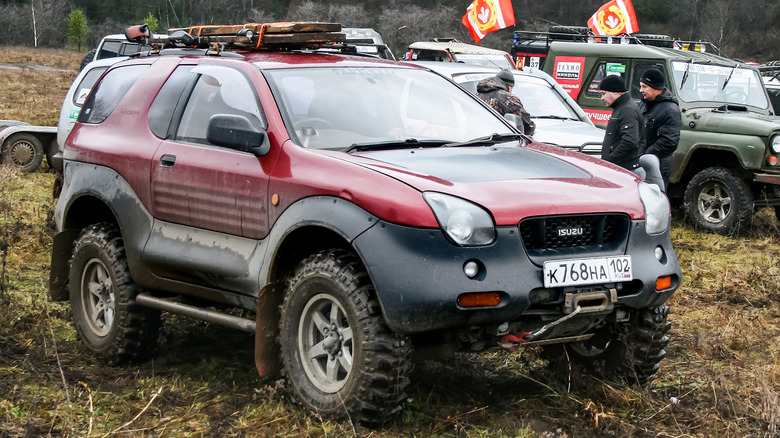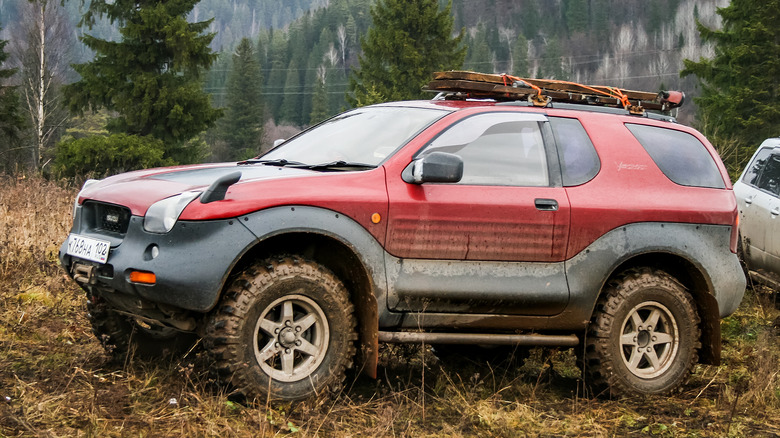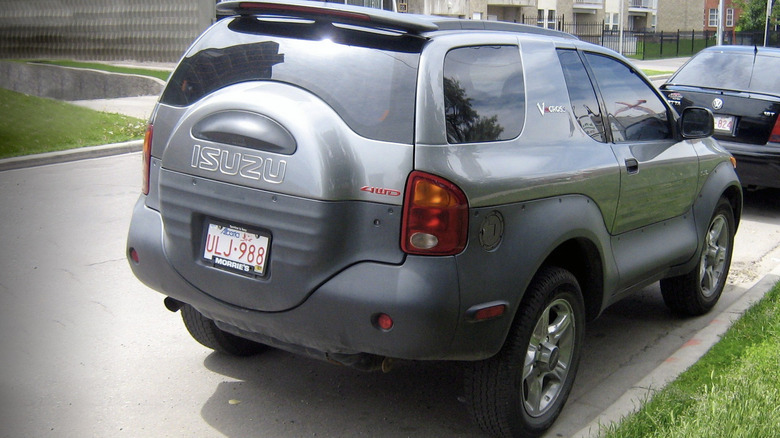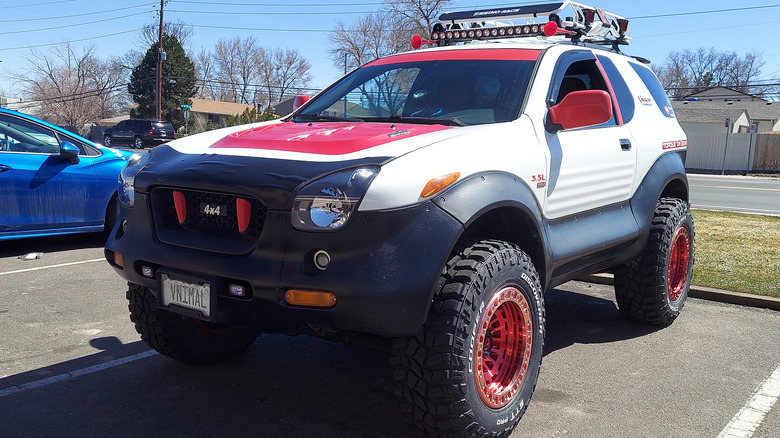Isuzu VehiCROSS: Cool Cult Classic, Or Just An Ugly SUV?
The VehiCROSS was a gamble for Isuzu, and its design splits opinions today just as much as it did when the vehicle was launched in 1997. It is considered one of the weirdest SUVs ever and was only in production until 2001. It was only sold in Japan (between 1997 and 1999) and the United States (between 1999 and 2001), and the number of available vehicles was deliberately limited to make the VehiCROSS seem like an exclusive offering.
Just under 6,000 vehicles were produced, of which around 4,150 were sold in the US, and 1,800 found buyers in Japan.
With its short two-door body, the VehiCROSS was considered a compact SUV, even though it rode on a shortened version of the same underpinnings as the second-generation Isuzu Trooper (also rebadged as the Acura SLX and Chevrolet Trooper). It measured just 162.6 inches (4,130 mm) in length and had a wheelbase of 91.8 inches (2,332 mm), but given that it was quite wide, it had a very planted and sporty stance.
Powering the VehiCROSS was a V6 engine that produced 215 horsepower at 5,400 rpm and 230 pound-feet of torque at 3,000 rpm. The only transmission option was a four-speed automatic, and the vehicle had a computer-controlled four-wheel drive system, which, combined with its high ground clearance, short wheelbase, and truck-like body-on-frame construction, made it excellent at going off-road.
Interestingly, Isuzu also produced four-door and convertible concept cars based on the VehiCROSS, the VX-4, and the VX-O2, and this signified that the manufacturer considered expanding the range of related models. Both were shown at the 2000 LA auto show, where they were presumably not received well enough to convince Isuzu it was worth putting them into production.
One-of-a-kind design
The Isuzu VehiCROSS was one of those Japanese cars whose design was ahead of its time, featuring wide bulging bare plastic cladding. It added to the car's aggressive look and put it in a design category of its own. From the front, the vehicle had small headlights that appeared to have melted and started running across the car's hood at speed. But while that may sound a bit weird (and not aesthetically pleasing), they worked in the context of the whole design and didn't look out of place.
It even had a pair of titanium teeth embedded in its grille to drive the point home just how aggressive it was meant to be.
The front wasn't the only controversial part of its design, though. It looked atypical from the side, too, thanks to the aforementioned body cladding, which went all the way around the vehicle, as well as the shape of the greenhouse and how far back it appeared to be set in relation to the long hood. The covered spare tire holder in the back was also molded into the rear door.
The 1999 model year in the U.S. had unique polished chrome 16-inch wheels replaced with larger 18-inch wheels for the final two years of production. In some examples, the interior was spruced up with red leather on the steering wheel, Recaro sports seats, and door cards. Still, aside from that, there was nothing particularly special about the VehiCROSS' cabin.
Special features
According to period reviews, the Isuzu VehiCROSS drove very well for such a high-riding vehicle. It handled on-road driving more than respectably, thanks to a suspension that was 60 percent stiffer than that of the Trooper on which it was based, and the Recaro seats helped add a sporty edge to the driving experience. But it was in its element off-road with its 8.4 inches of ground clearance, selectable four-wheel drive system with TOD (Torque on Demand), and a lockable rear differential.
Car and Driver even took a VehiCROSS around the skidpad, recording a lateral force of 0.75 g, better than a Mercedes-Benz ML430's 0.73 g value.
Isuzu wanted the VehiCROSS to be a vehicle that could cover rough ground quickly, so it equipped the vehicle with special shock absorbers that featured additional expansion chambers (also known as remote reservoir shocks). You usually see these shocks on modified off-roaders and Baja trucks, but Isuzu fitted these from the factory specifically to enhance the VehiCROSS's ability to be driven at speed over bumps as a way to justify the crazy exterior design.
Another disadvantage of the polarizing styling, other than people thinking it's weird as you drive by, was that it impaired visibility. That aforementioned rear spare was mounted so that it blocked a big part of what was going on behind you, and the shape of the rear door didn't improve things at all. The steeply sloped windscreen and the shape of the A-pillars didn't help with front visibility either.
[Featured image by dave_7 via Wikimedia Commons | Cropped and scaled | CC BY-SA 2.0]
Is the VehiCROSS cool?
If the Pontiac Aztek, once considered one of the ugliest vehicles ever made, is now considered cool despite its design, then the Isuzu VehiCROSS also has a chance at it. Something is already happening to its image because prices for used examples have increased in recent years. While in the mid-to-late 2000s, you could find a low-mile VehiCROSS for a few thousand, now they are regularly changing hands for over $10,000. On Cars and Bids, most examples sold through the site starting in 2020 sold for over $11,000, with a few exceptions. One 1999 VehiCROSS sold in May of 2023 for just $4,250, but it had previous accident damage and many flaws that needed to be fixed, and these, along with the year, brought down the price.
The average price for a VehiCROSS, according to classic.com (which lists sales from other sites), based on the last 21 sales recorded on the site, was just over $13,000. It also lists the most a VehiCROSS went for, which is $25,500 for a 2001 example that was actually the last one ever to roll off the production line. The same site has a graph showing that the average price has increased since 2019, when they sold for under $10,000.
This is a testament to the fact that the vehicle's status is changing and has gained fans over the years. People aren't just buying these to pose in them. Some sold on auction sites featured modifications to make them even better off-road. This suggests many owners took their VehiCROSS on trails, which only boosts its coolness.



